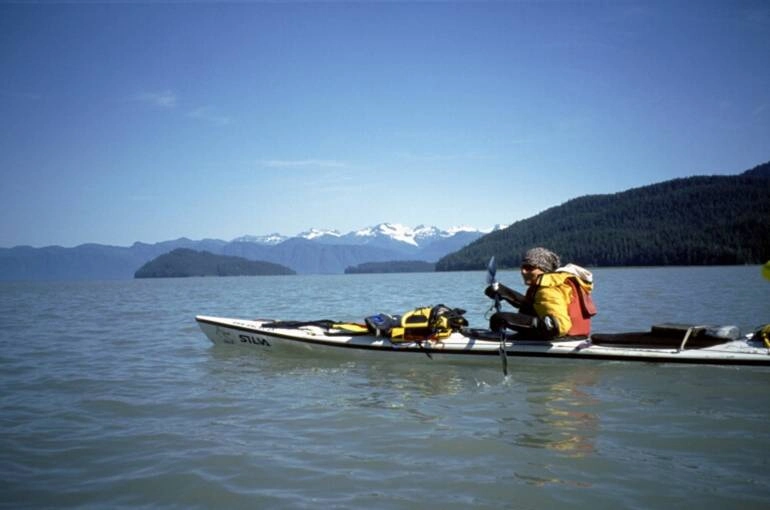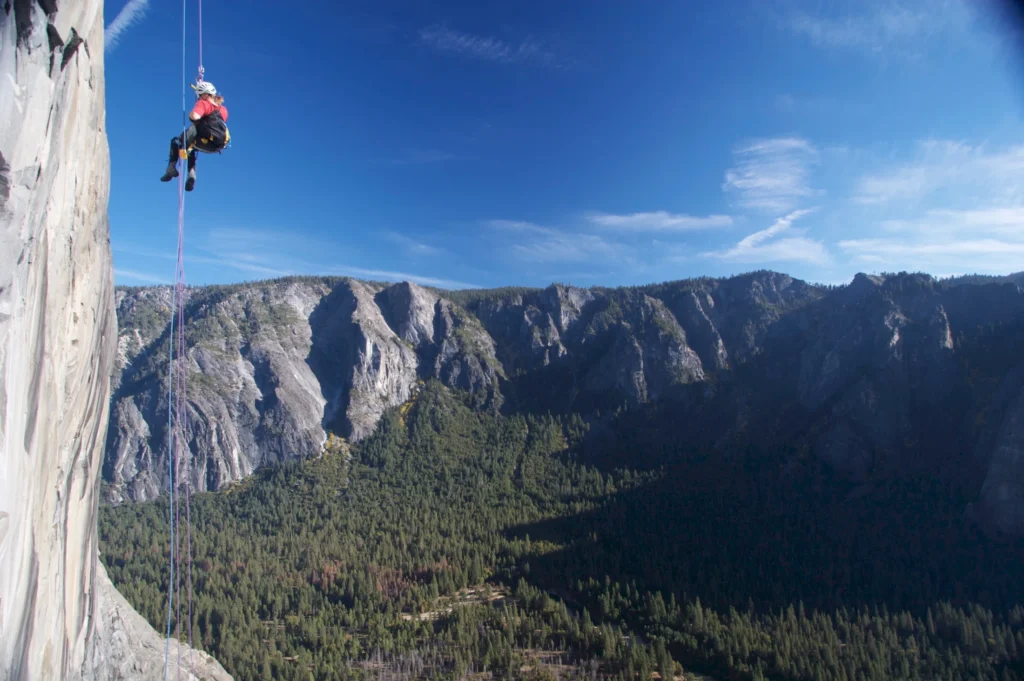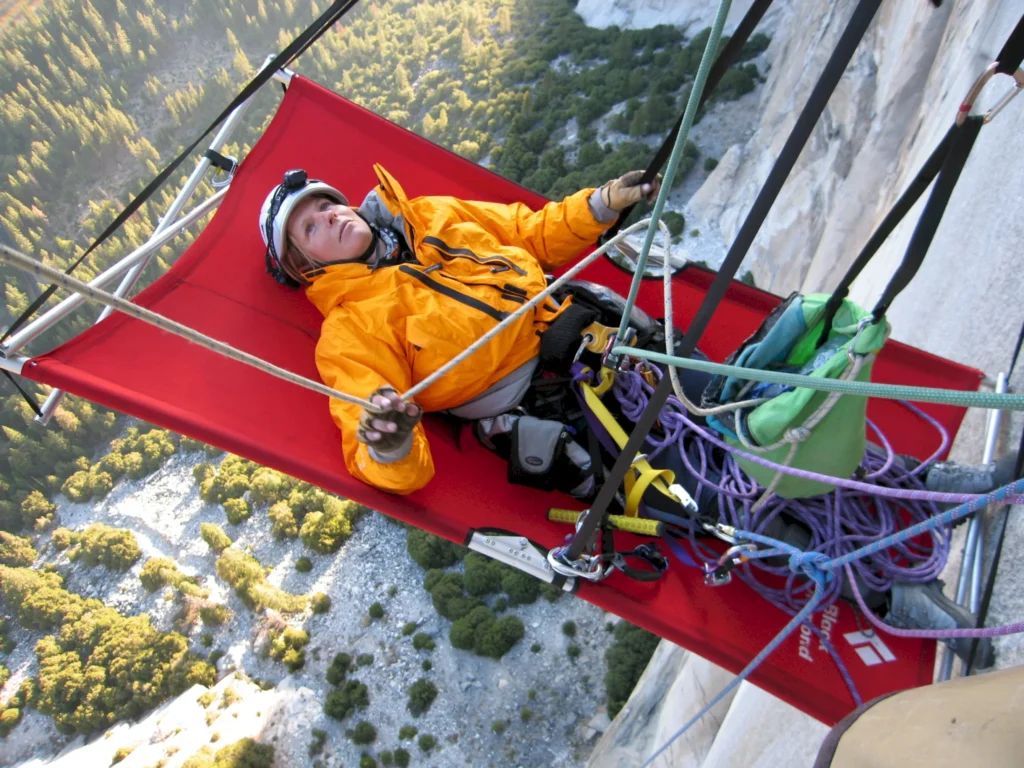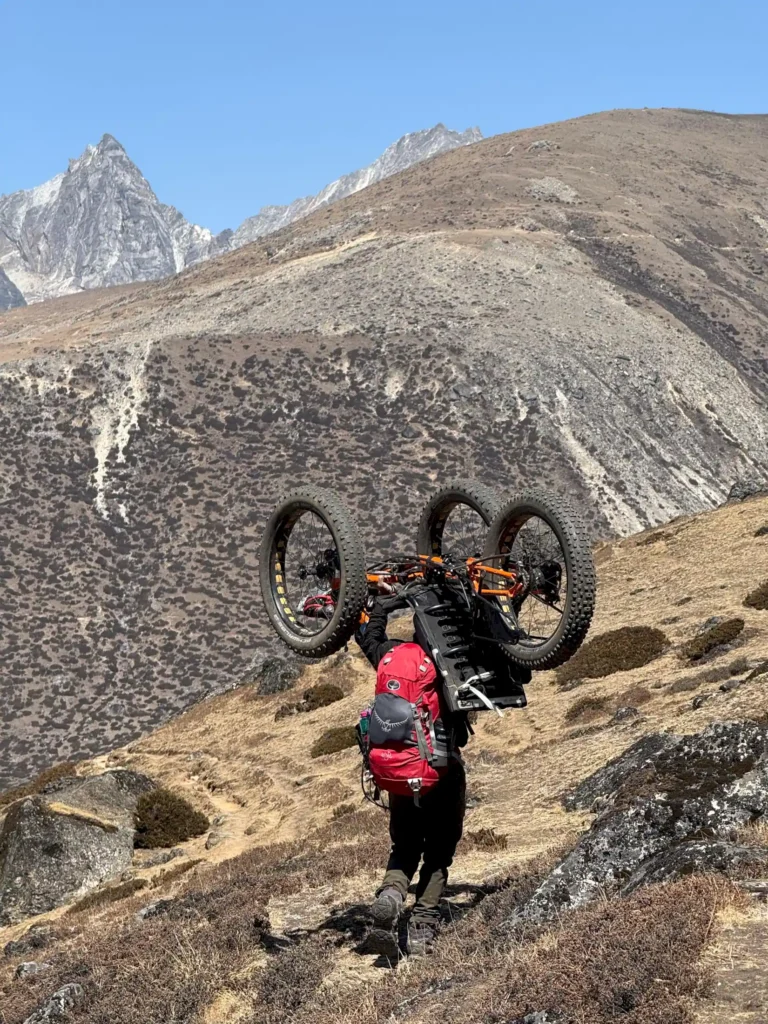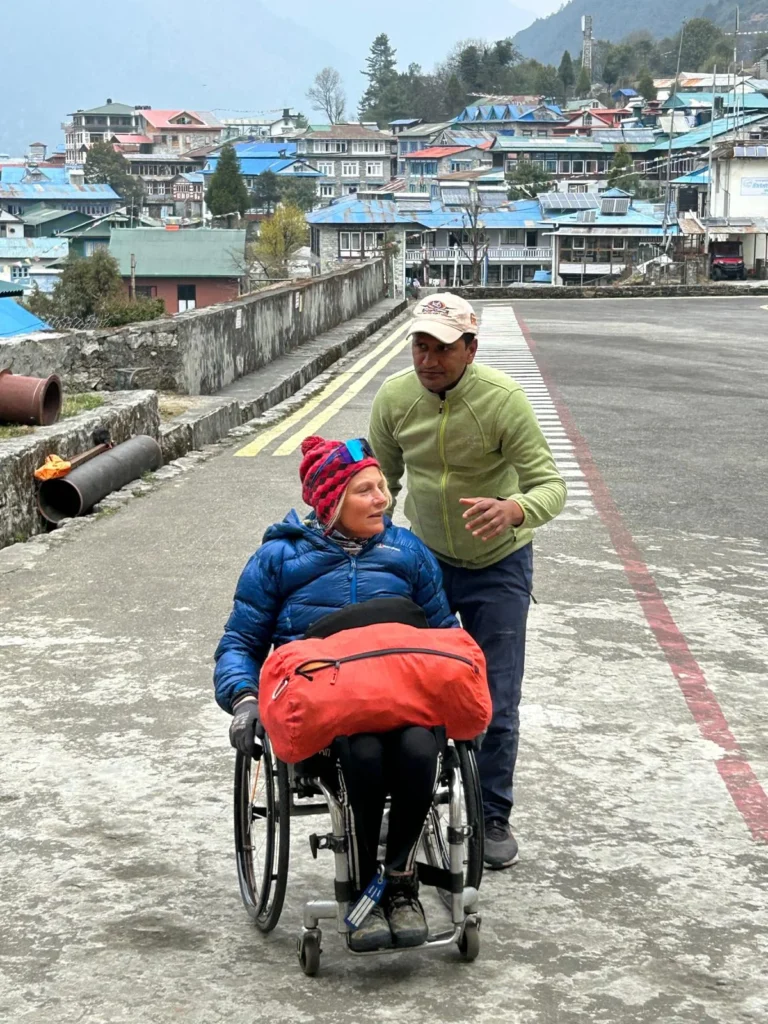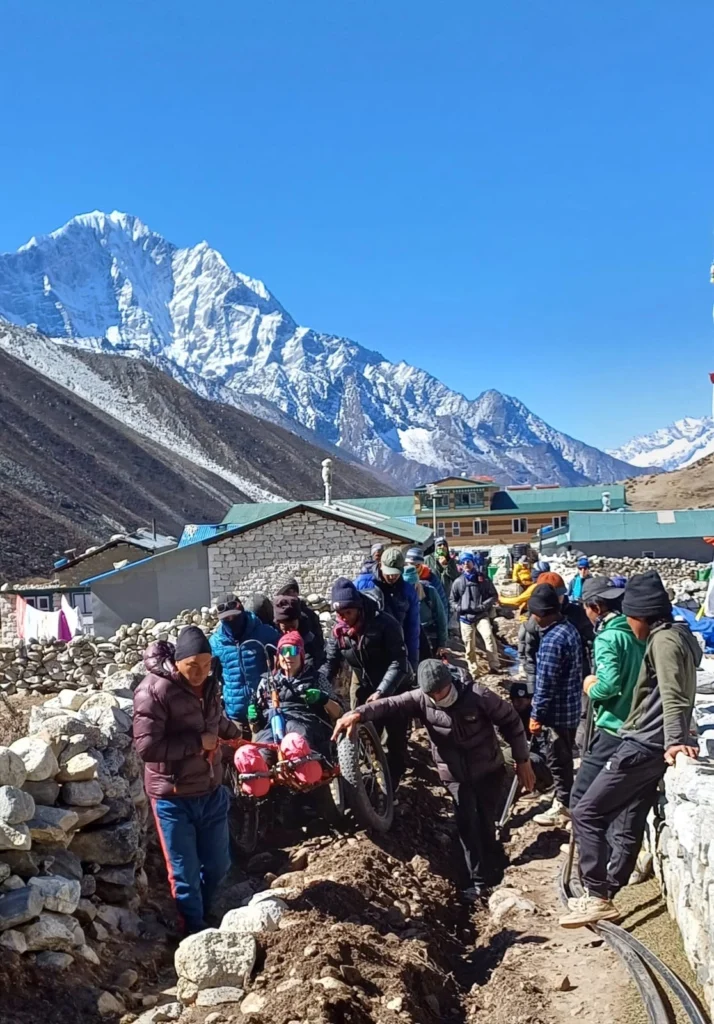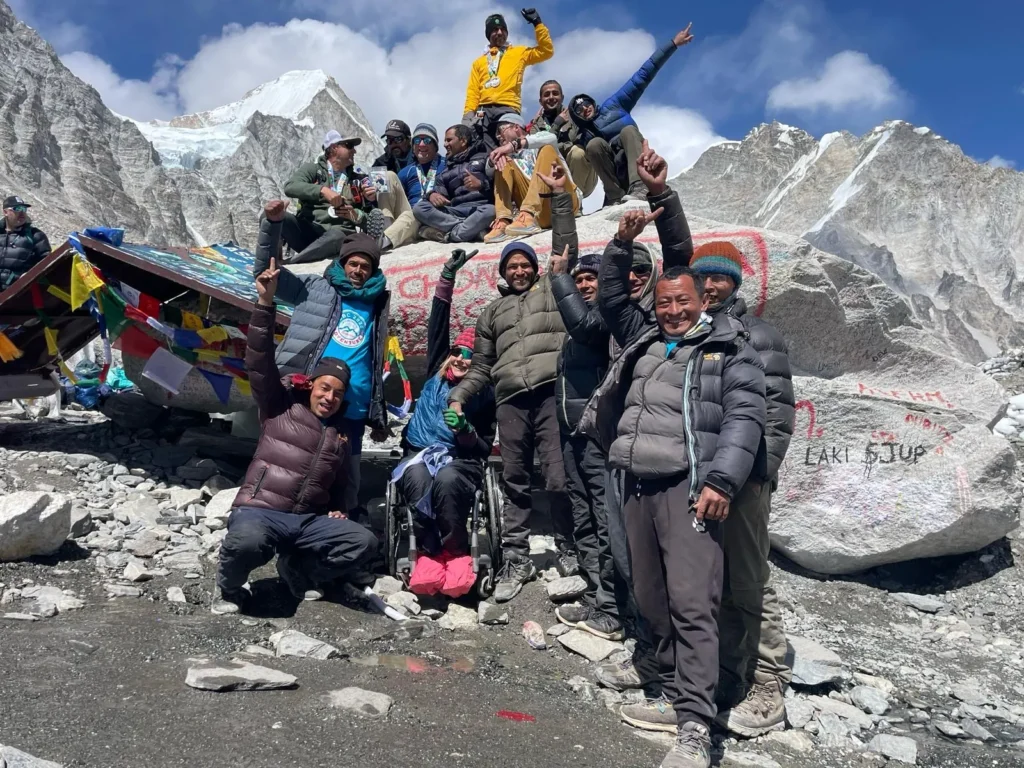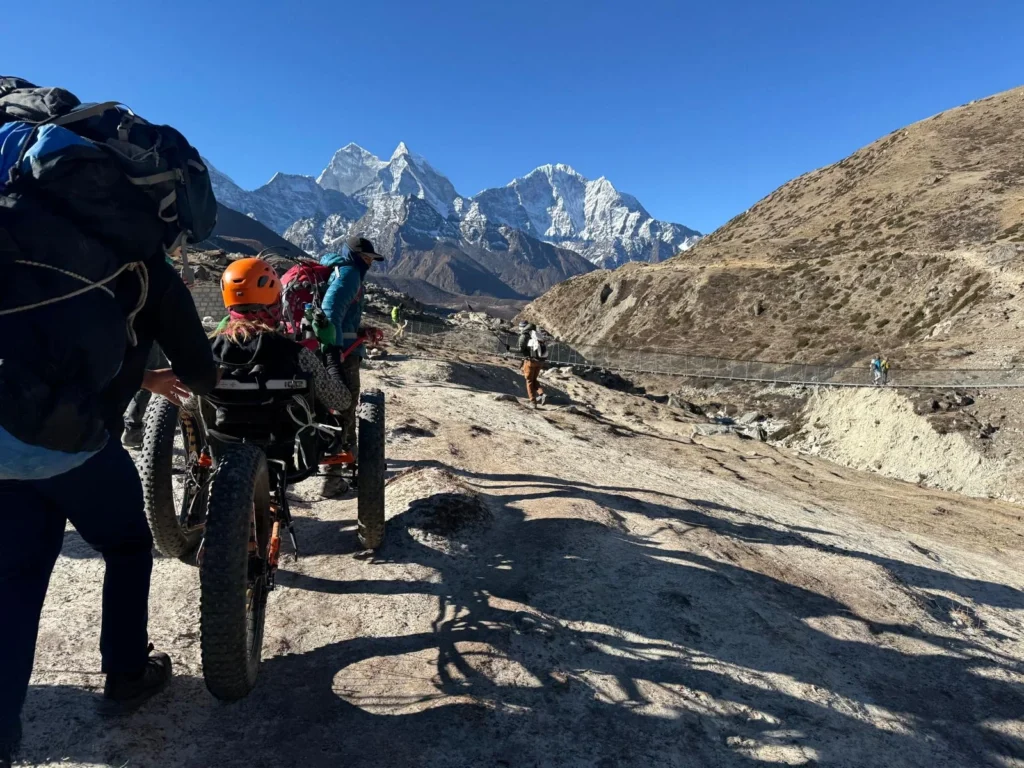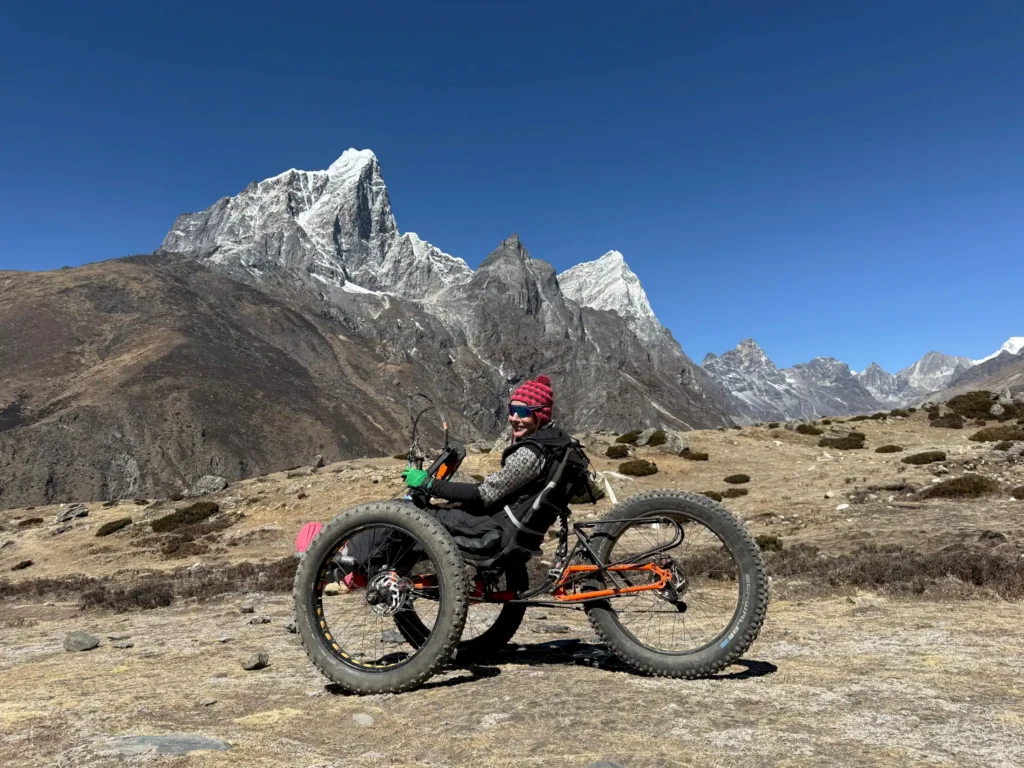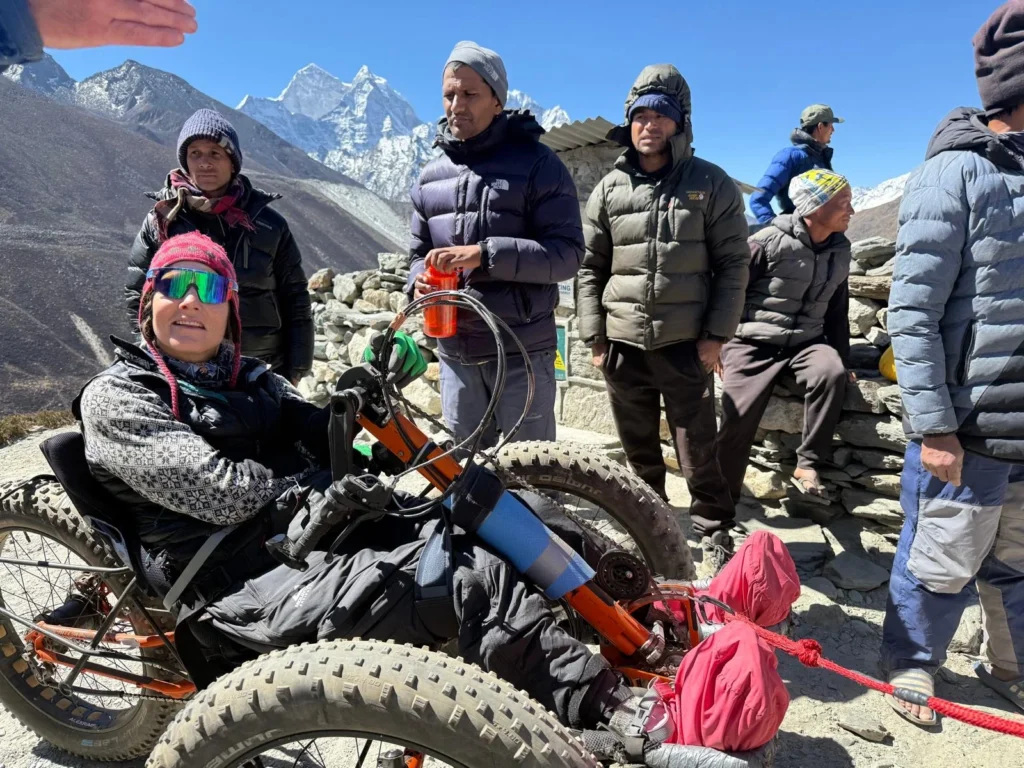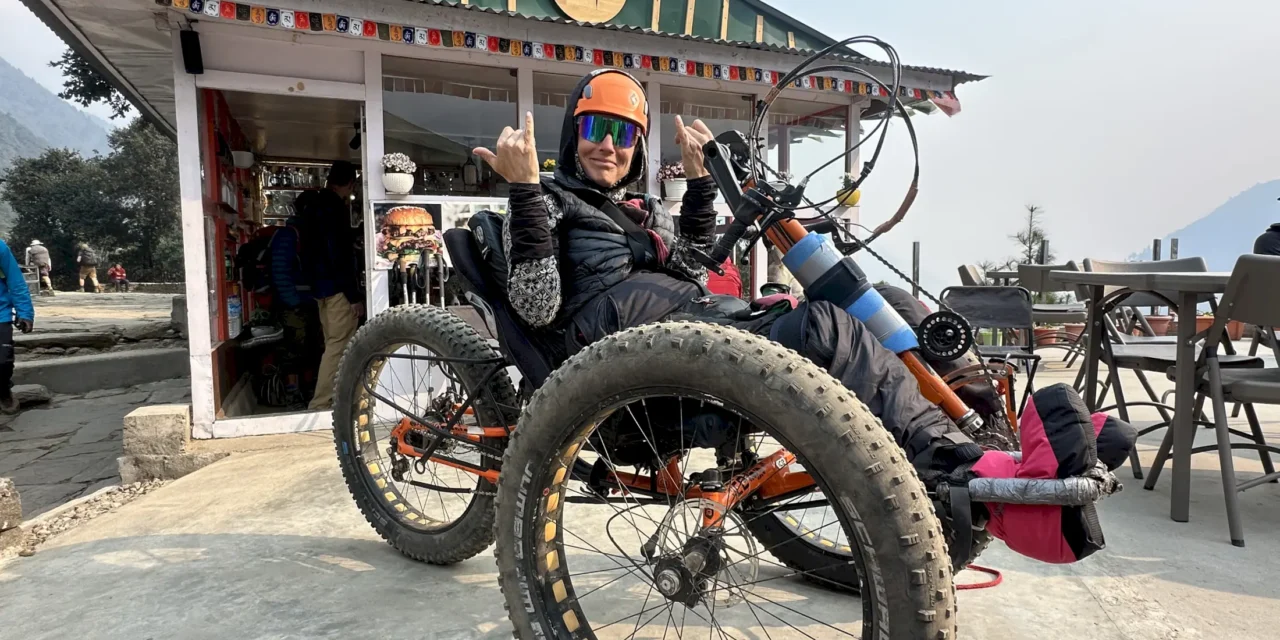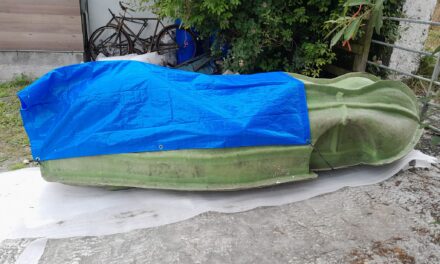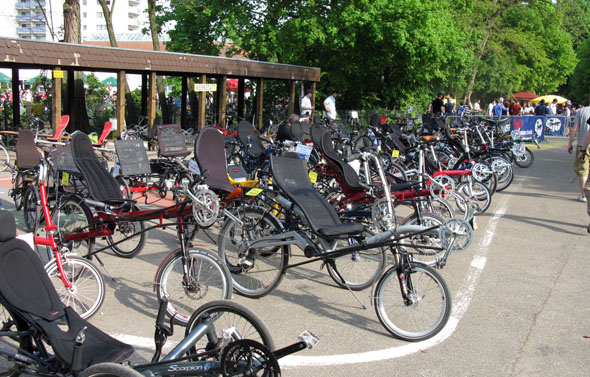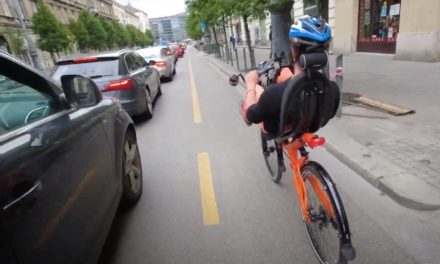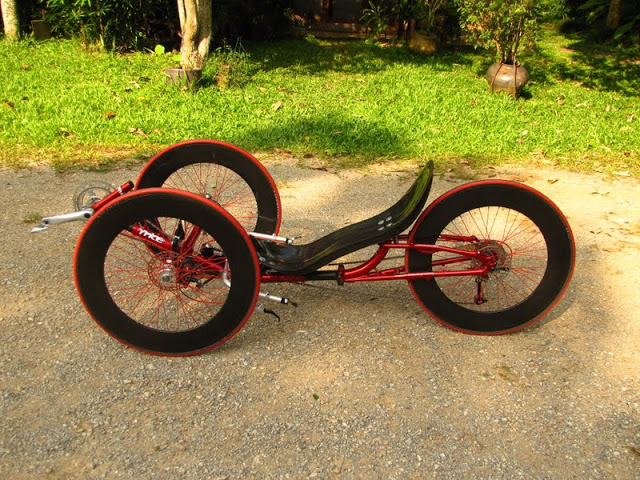Karen Darke conquers Everest Base Camp trail on a handcycle fat trike—130km, no e-assist, and with the help of a dedicated team. A trail of teamwork, determination, and jaw-dropping Himalayan views made it unforgettable.
You recently completed a trek to Everest base camp with a recumbent handcycle fat trike, where did your journey start and end?
Lukla, following the regular EBC (Everest Base Camp) trail to base camp via Dingboche, then back down via Pheriche
What distance/elevation did you cover on your trike and how long did it take?
65km each way. We started the EBC trek in the mountainside town of Lukla, which is 2,860 m (9,383 ft) above sea level. Everest Base Camp is a whopping 5,364 m (17,598 ft) above sea level. That means your altitude gain on the EBC trek is 2,504 m.
Total distance 130km
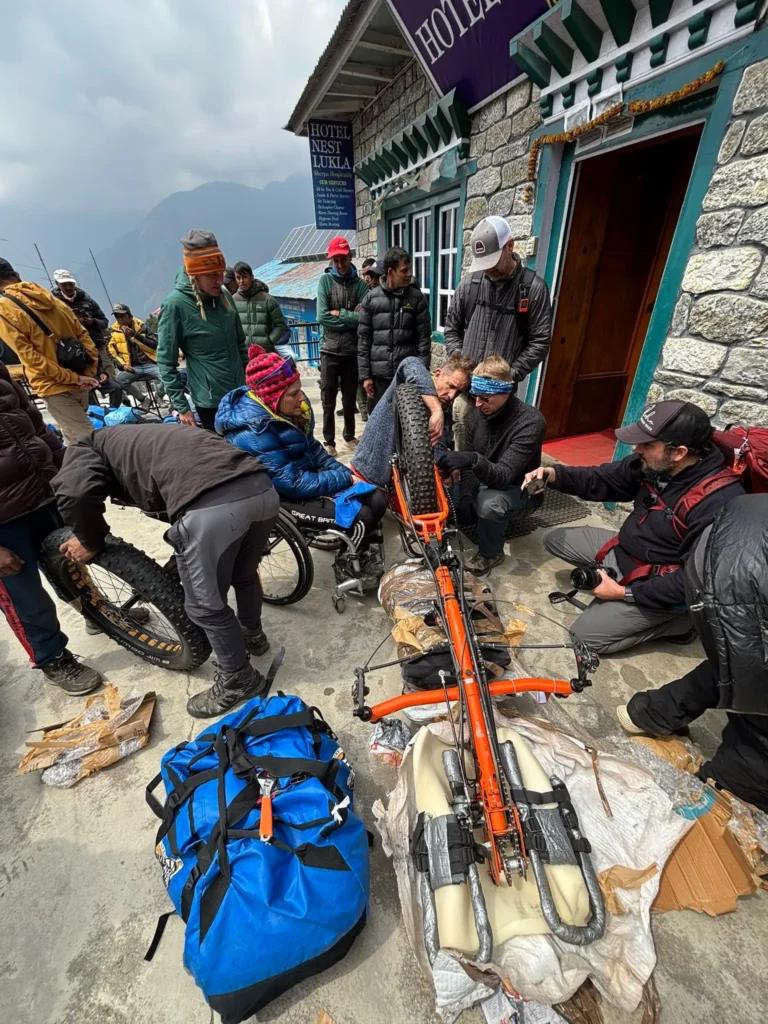
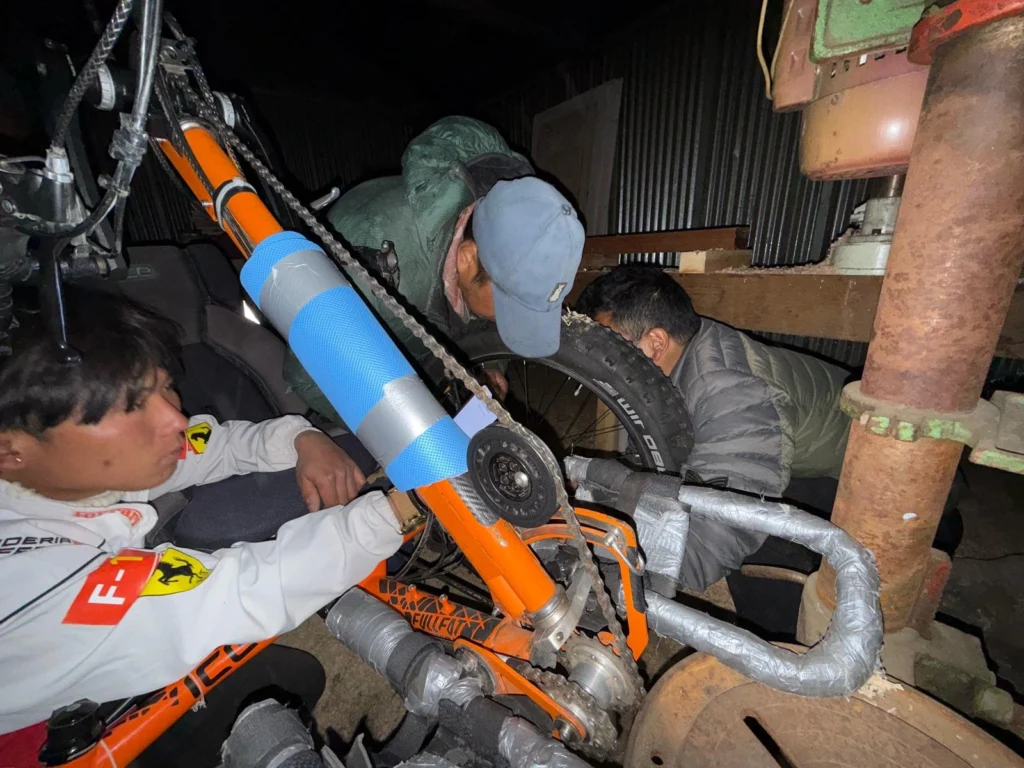
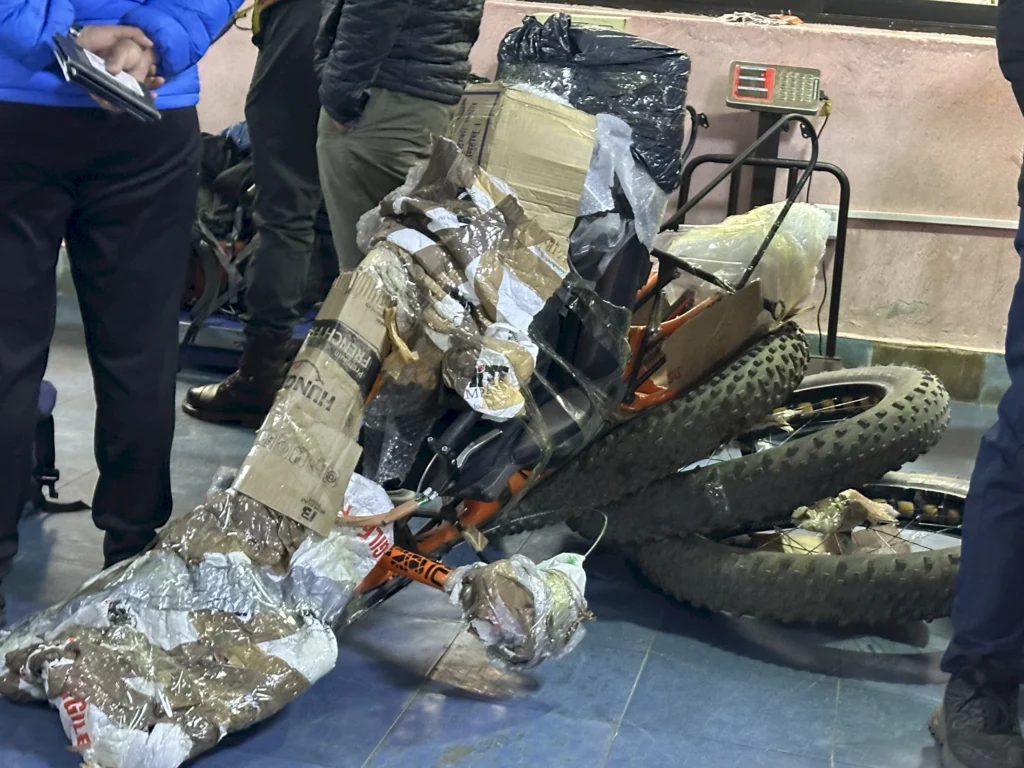
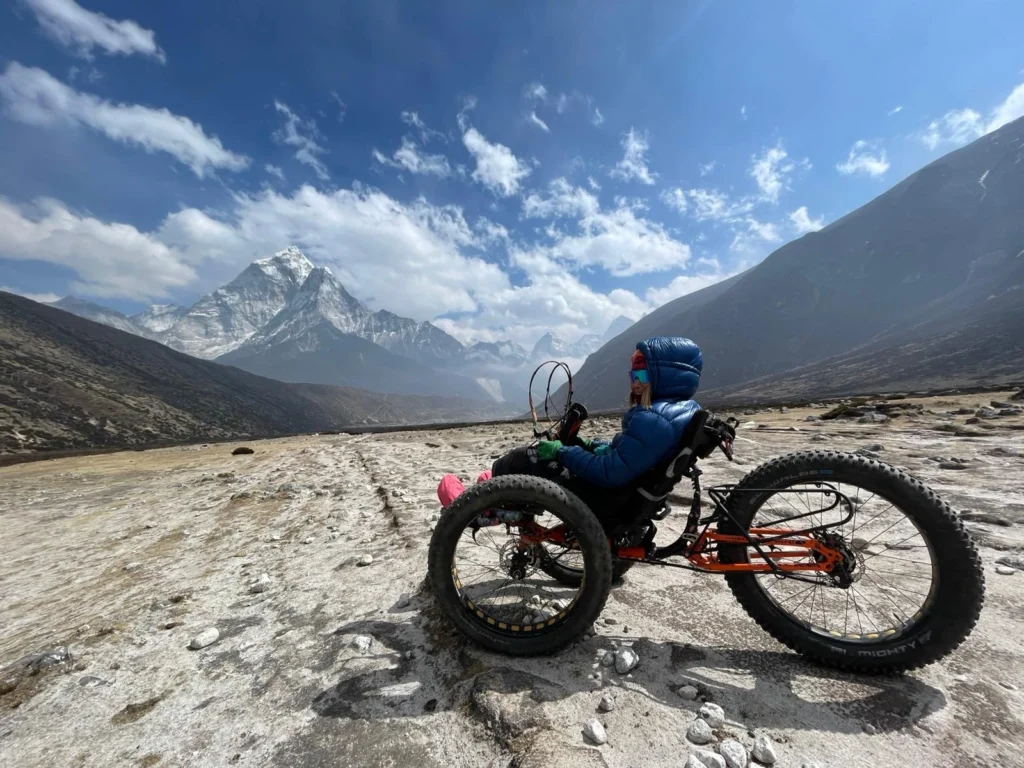
What trike did you ride on this trip?
The ICE trike recumbent with handbike attachment, made by Z-trikes.
Did you have electric assist?
No electric assist, but plenty of help from four porters who were there to support me navigating the trail.
What modifications to the trike were made to accommodate you and this adventure?
No specific mods for this journey.
This was a team effort to get to Base camp. ow many people in your group and what support role did they play?
We had a team of 15. Three were close friends of mine, but the others I had never met. Each person had their own focus, fitness challenges or other thing going on (a pilgrimage to a family member, a mission to climb in flip-flop style sandals with socks etc.!). The primary support for me was from 4 porters assigned to help me travel the trail. It turned out that the whole porter group (I think 14 in total), were largely related, part of the Basnet family, and absolutely incredible! A huge support and impossible without them. The write up is on my blog here.
What steps do you follow to get in and out of the trike? Is the fat trike easier to get into position than the other trikes you have experience with?
It’s high up off the ground so actually a fraction higher than my wheelchair rather than very low, so much easier to get in and out of from my chair. However, it helps to have assistance getting in and out to feed my feet / ankles / lower legs through the frame so that they land on the footrests. I can do it myself but it’s a lot of work to stop my feet catching on things.
Fat trikes are on the wide side, what did you do when things got too steep or narrow to pedal?
It was never too steep too pedal as super low gearing (sorry, not sure on ratio), but too steep to gain traction without assistance (not enough force in the low gear), so I brought a pulk harness system along (for towing a sled), which clipped to the front of the bike and meant someone could also pull from up front. Also often one porter went at the back and helped push from behind.
When the trail was too narrow or precarious for the bike, one of the porters had made a kind of wicker basket to fit me. I sat in that and was carried on one of the porters heads with a single rice bag strap over their forehead. Crazy!
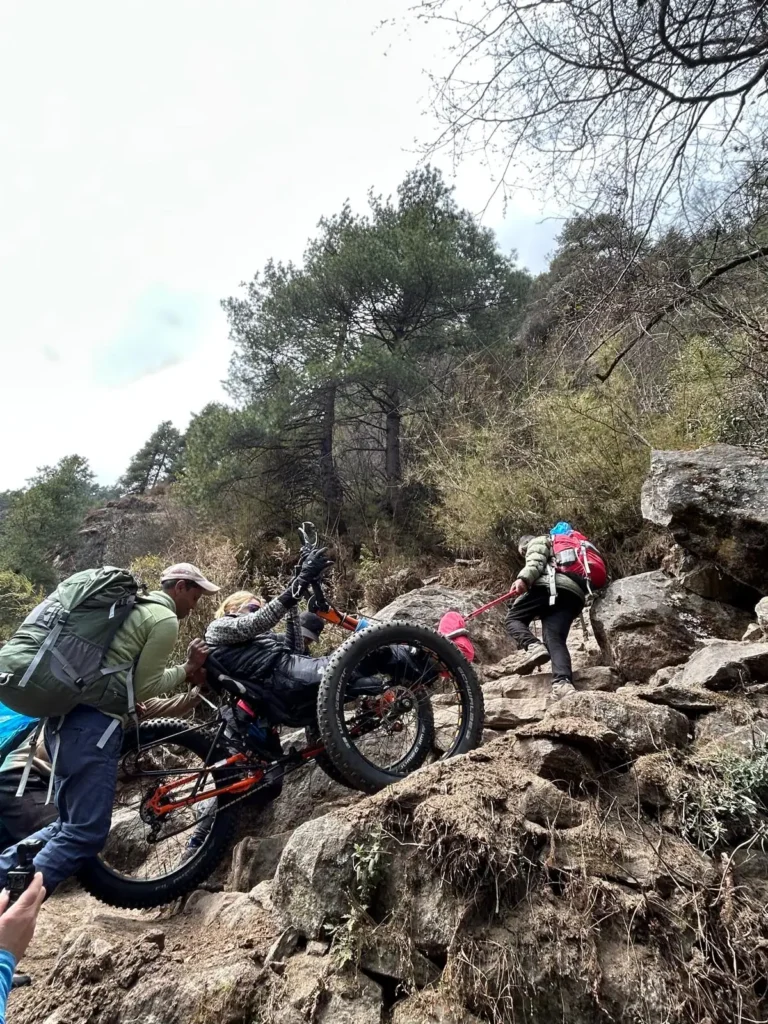
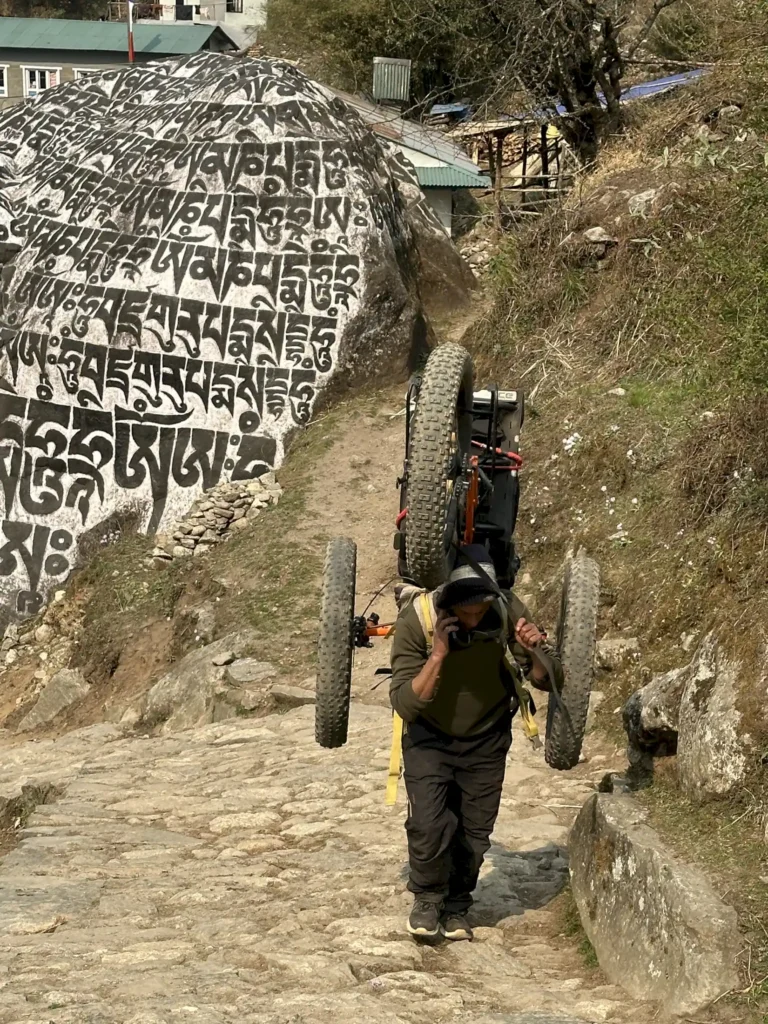
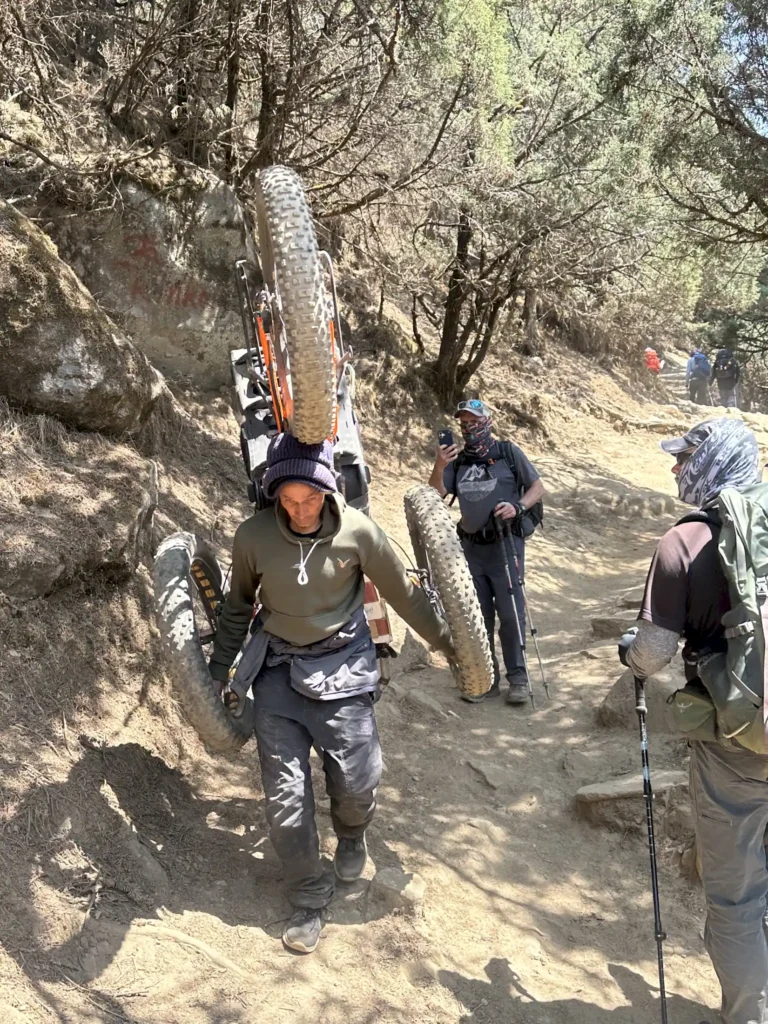
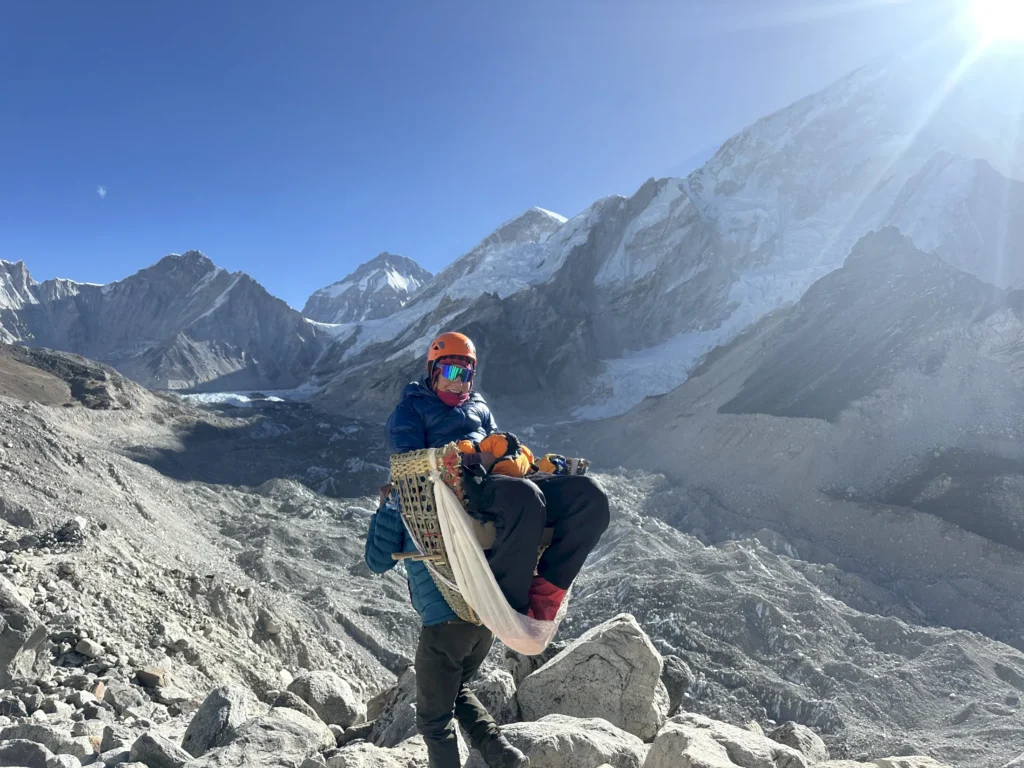
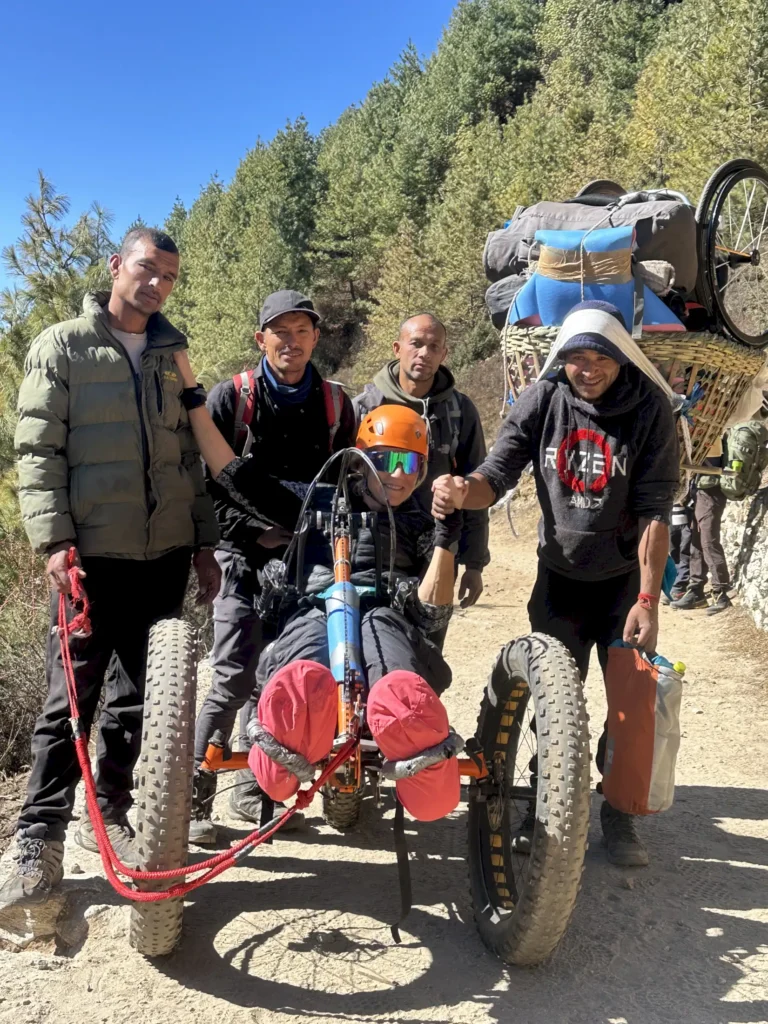
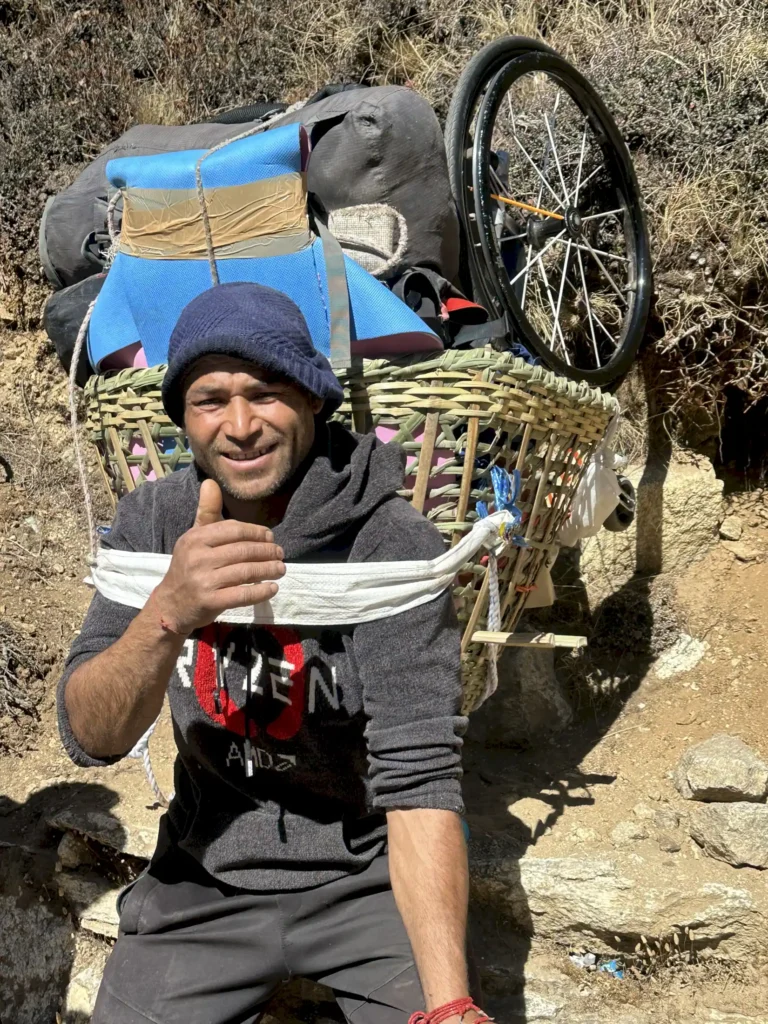
What was the most challenging situation for you?
Surrendering to being carried in a basket when the terrain was too crazy to ride.
And then concentrating on safe riding – managing our little team of 5 (me and 4 porters) to navigate extremely challenging terrain safely and at a speed that was feasible / sustainable.
Did the altitude affect your physical or mental health in any way?
Physically – headaches, blocked nose and swollen tissues but nothing terrible.
Tell us about a memorable animal encounter while on trail.
Plenty of yaks and donkeys….no specific encounter that was especially memorable.
Karen, from sit-skiing Greenland to tandem riding the Himalayan mountains to sea kayaking, olympic handcycle medals, even a world handcycle speed record, you have accomplished so many amazing adventures over the years, what drives you to keep getting out there?
I love the intensity of the experience, being close to nature, the teamwork and camaraderie that is involved, the simplicity of life once on the trail with a shared objective and clear goals each day.
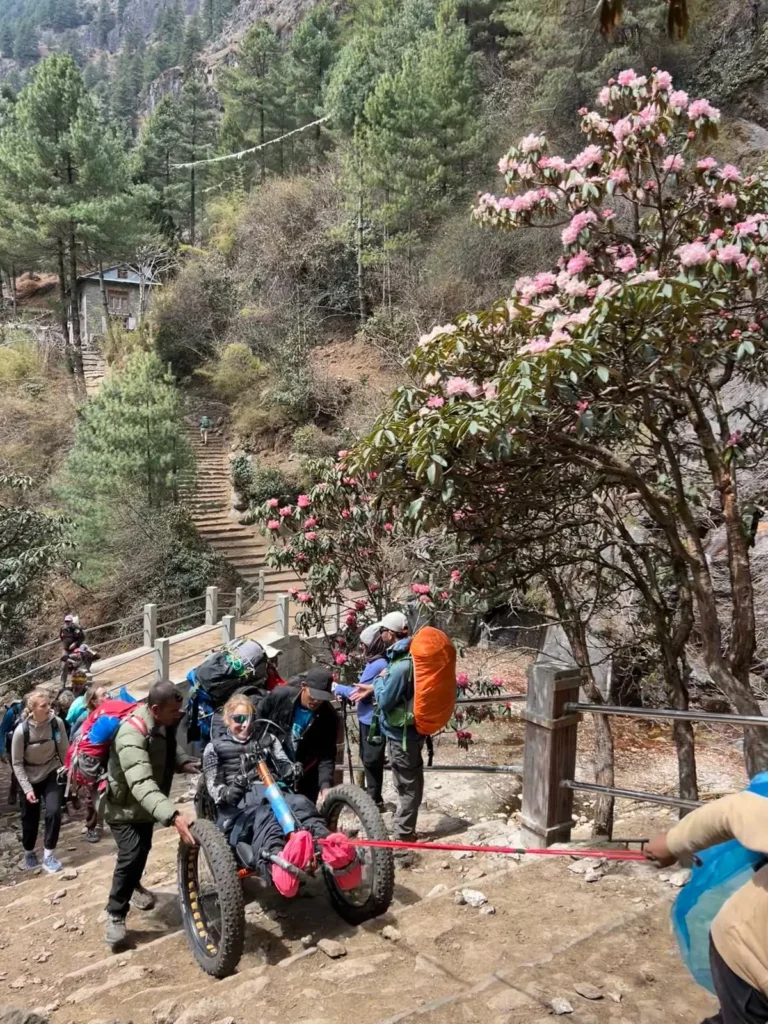
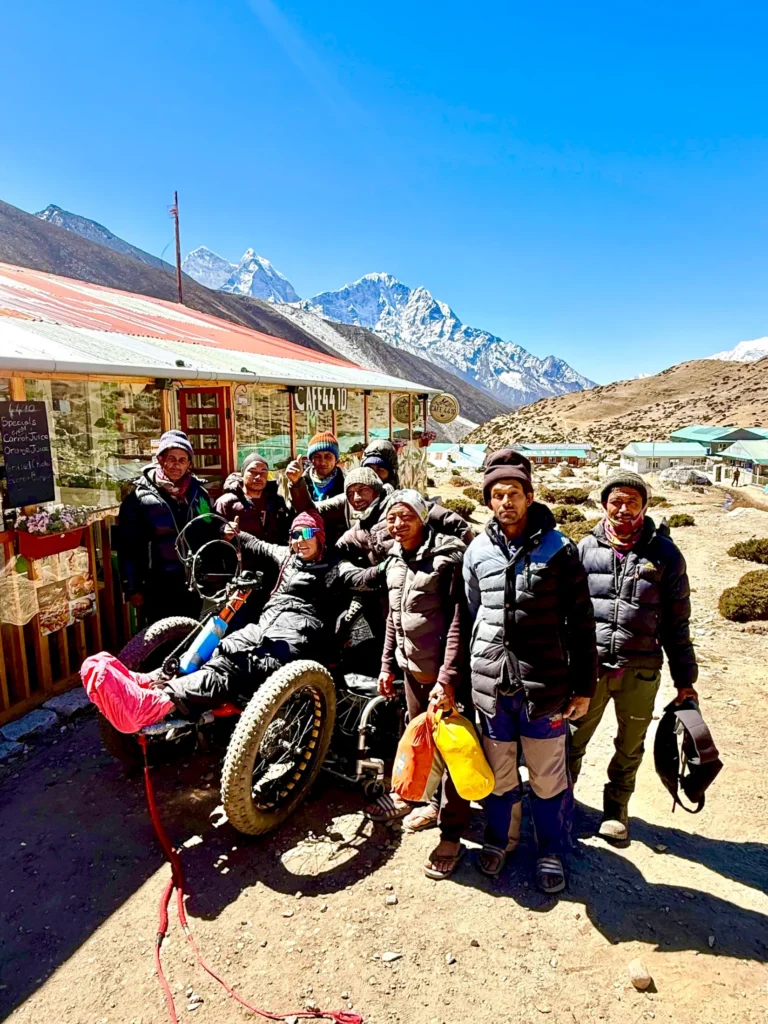
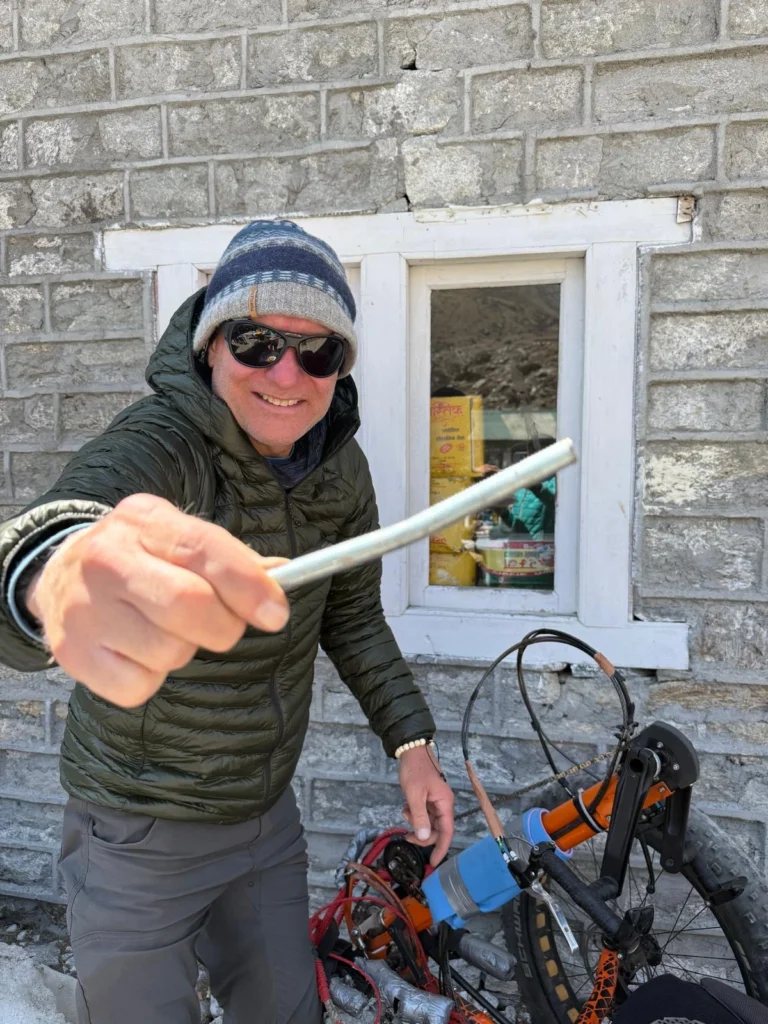
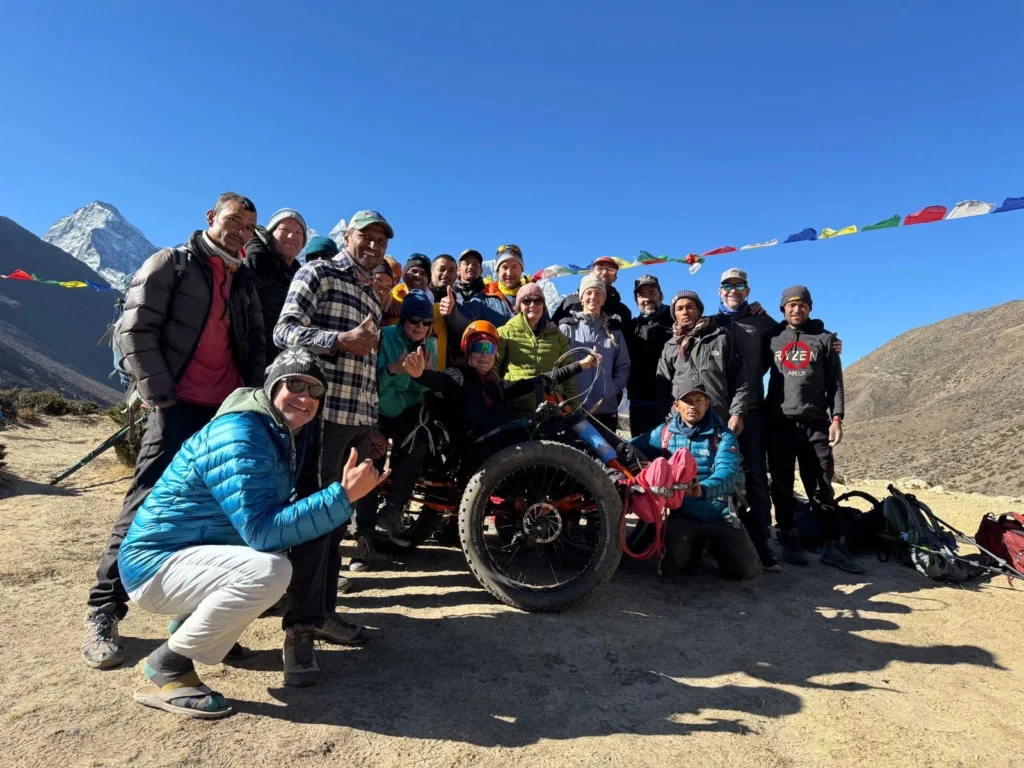
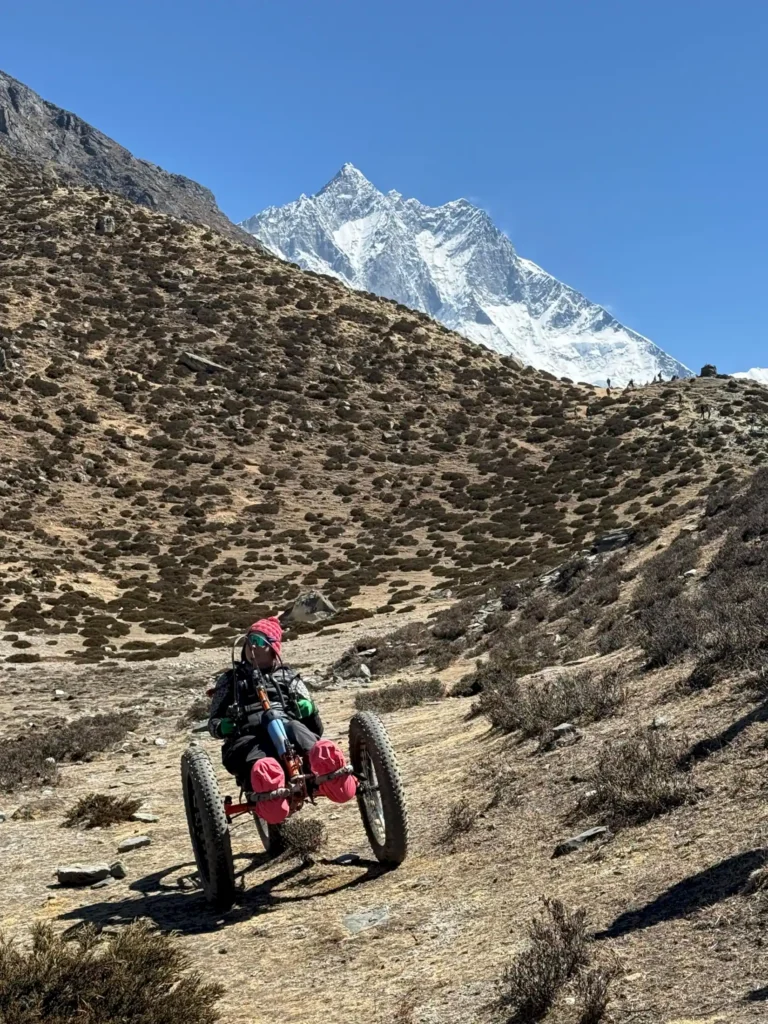
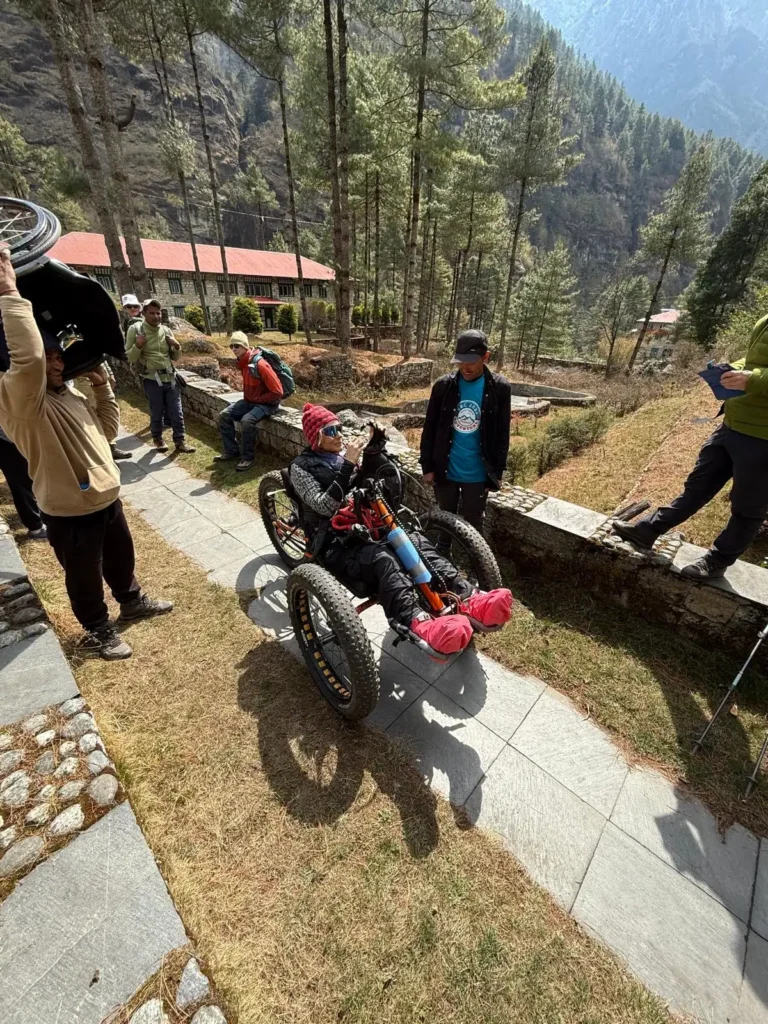
What was your first experience on a recumbent?
I had a handbike designed for me – made in a small village called Alves in Scotland, which ironically is now where I have ended up living!
Some handcycle riding positions are very laid back. How long did it take you to be comfortable on a handcycle?
Very quickly as it’s like a version of lying down, which of course is comfy!! The challenges are getting used to being so low – closer to traffic, less of a view often as I can be below walls and hedgerows etc.
Your most memorable accomplishment while riding a recumbent handcycle?
Too many to name one, but a few memorable moments are:
- Top of the Khunjerab Pass in the Karakoram, 1997, on a journey from Kazakhstan to Pakistan.
- Sharing a bronze medal in the London 2012 Paralympics holding hands across the finish line (apparently a controversial thing to do!); Winning gold in Rio (time trial, 2016).
- The summit of Kilimanjaro on the ICE trike.
You have operated many different handcycles, what ride was the most fun for you?
One of my most fun and incredible rides was across the Tibetan plateau in 2014. We rode up to Everest base camp in Tibet from the north. An incredible journey, mostly above 5000m and spectacular scenery.
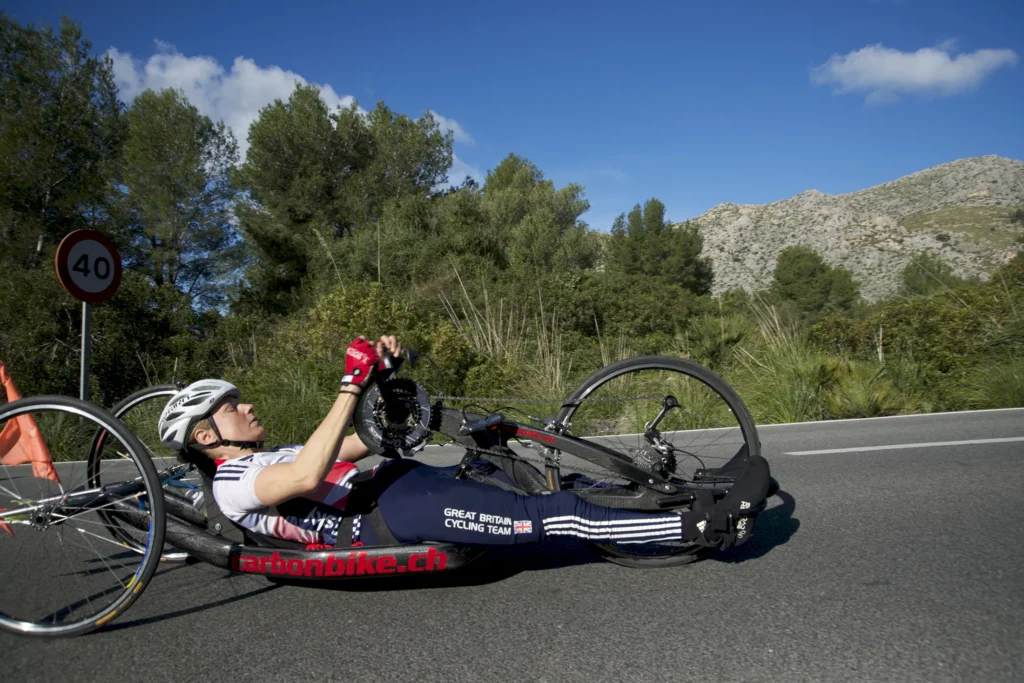
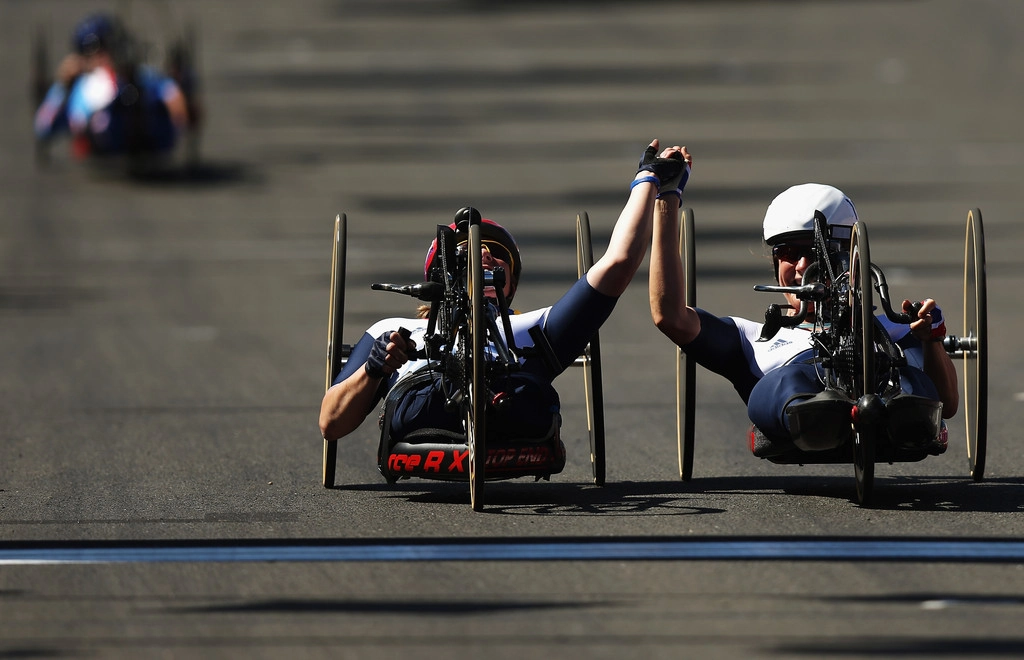
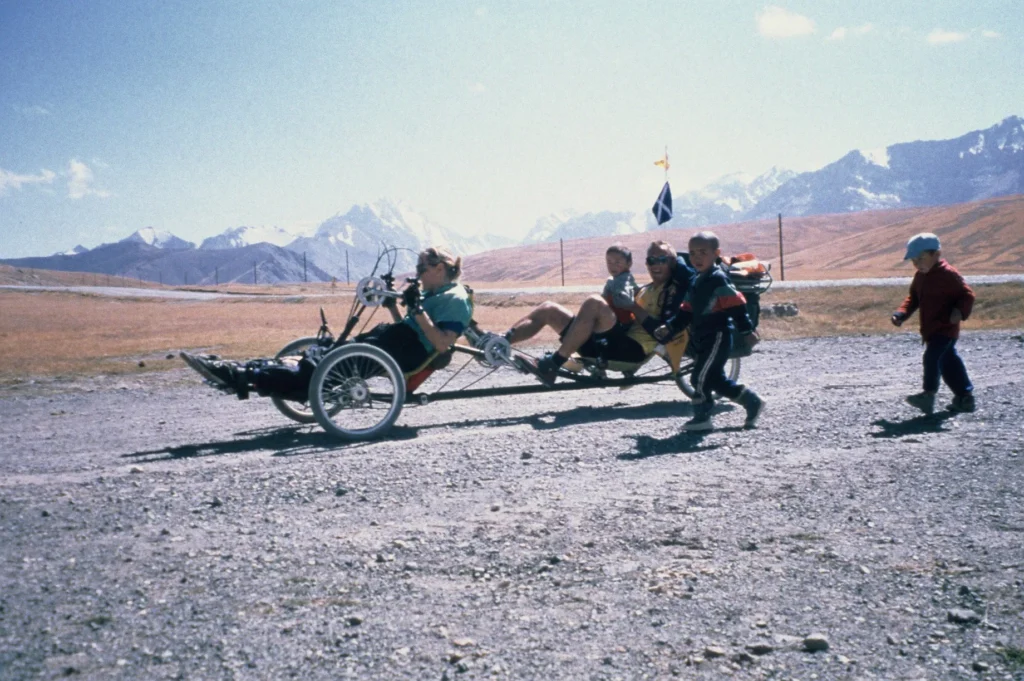
Your disability requires a community of support to help you stay active, and chase your dreams. Do you have a core group of other amazing humans that joins you on each adventure or has your support changed with each adventure?
Not really. Each adventure is different, but there is one friend, Vicky Sherwood – a teacher in Scotland – who has been part of quite a few cycling trips: Tibet, Ethiopia and Everest. She’s a bit of a legend. Other trips are so varied in nature that the people that join are different as have different passions or skills.
You also have 3 books published on top of all those adventures, what do you have planned for future projects/adventures?
I’ve almost finished a fourth book called ‘The Pole of Possibility’ about the journey to create it, in Antarctica. It also looks more deeply at what enables us to be the best versions of ourselves, to work towards surprising possibilities.
Future projects…apart from the handcycle land speed record in Nevada, again at Battle Mountain with Liverpool University, previously done in 2018 with them (read about that adventure here) I will be going back to try and break my own record. But there will be more. I don’t have a bucket list.
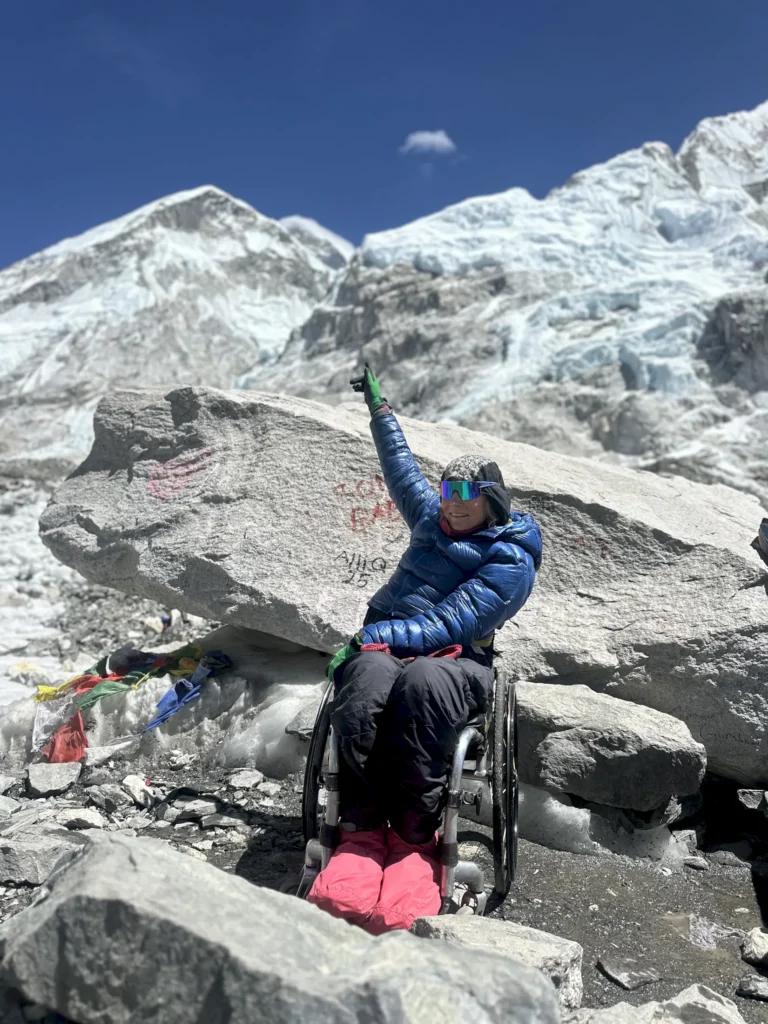
KAREN DARKE
Year of Birth: 1971
Residence: UK
Education: PhD
Job: Adventurer
Bike(s): Carbonbike recumbent handbike (road bike)
ICE trike (offroad); Lasher e-MTB (offroad)
Motto: “Ability is a state of mind”
Website/socials: https://www.karendarke.com
Instagram- @handbikedarke
Facebook Page Here
